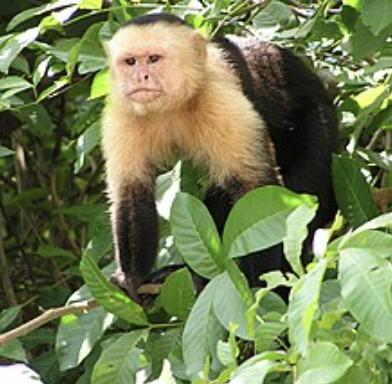Costa Rica's Marvelous Monkeys
- Lisa Cappello

- Jun 3, 2023
- 3 min read
Updated: Sep 10, 2023
Seeing monkeys is high on everyone’s list when they arrive in Costa Rica. This biodiverse paradise is home to an array of monkey species. Let’s swing into action and explore the best ways to see them on your next vacation.
While sloths may steal the spotlight with their slow and endearing nature, monkeys add a vibrant and lively element to Costa Rica’s wildlife. The country boasts four main monkey species. The endangered Mantled Howler Monkey, with its distinctive howling call that can be heard miles away, is impossible to miss. If you are a light sleeper, you may wake to the sounds of howler monkeys outside your lodgings (or up to three miles away!). The White-faced Capuchin Monkey is known for its expressive face, and mischievous behavior. Don’t leave your lunch unattended, or a capuchin might swoop down and run away with it! Spider Monkeys are known for their impressive agility and incredible acrobatic skills. They are found in some of the more remote rainforests such as Tortuguero and Corcovado national parks. Squirrel Monkeys are colorful and playful. They are also an endangered species, due mostly to habitat loss. In the 10,000+ acres of Corcovado National Park, squirrel monkeys are thought to number only around 2,700.
Monkey Family Life
Monkeys are highly social creatures and live in complex societies. Most form tight-knit groups that help them survive and protect against predators. These groups, known as troops, bands, or tribes, often consist of several males, females, and their offspring. Within these communities, monkeys exhibit sophisticated communication skills, using a combination of vocalizations, facial expressions, body language, and grooming rituals to convey messages, strengthen social bonds, and establish hierarchy.
Brainiacs
Monkeys are intelligent, on par with some of the most intelligent non-human animals. They possess problem-solving abilities, the ability to use tools, and can learn complex tasks through observation and imitation. Some species, such as capuchin monkeys, have even demonstrated a basic understanding of monetary value, trading tokens for food. Their cognitive abilities continue to astonish scientists, shedding light on the evolutionary development of intelligence.
Costa Rica’s Wildlife Bridges
Costa Rica has more wildlife bridges than any other country. Howler monkeys were found to be dying by the hundreds every year as they are often forced to come down from the trees to cross roads, or to use electrical wires, resulting in electrocutions. Some concerned citizen groups have studied the roaming habits of these monkeys and their research has resulted in the construction of mesh and rope bridges to allow monkeys safe passage between tree canopies. There are also laws now which require wildlife bridges to be constructed over any new roads. From 2015 to 2021 in the beach town of Playa Hermosa, monkey populations nearly doubled as a result of the wildlife bridges. While intended primarily for monkeys, other species such as squirrels, kinkajous and opossums have been witnessed using the bridges as well.
Protect our Monkeys!
You can do your part to help Costa Rica protect our beloved monkeys by following the guidelines below:
Never try to pet or capture a monkey in the wild.
If you find an injured monkey, contact International Animal Rescue Costa Rica at +506 8824 3323. Do not handle the animal yourself.
Don’t feed monkeys in the wild. Costa Rica’s national parks have strict carry-in, carry-out policies so that food scraps and trash are not left for monkeys to find.
Please don’t pay to hold a monkey and have your picture taken with it. These operations are illegal, but unfortunately can still be found in tourist locations. The impact on the animals is devastating, and most of them do not survive.
Hire certified naturalist guides to tour our beautiful national parks. Guides know where to look for monkeys and other wildlife, and they can share lots of interesting monkey facts!
Look up! Monkeys are tree dwellers, and if you are alert, you will often see a tribe of monkeys making their way across the tree canopy overhead.
Monkey Business
Some of the places to spot monkeys include Manuel Antonio National Park, Corcovado National Park, Tortuguero National Park, Arenal Volcano National Park, and Monteverde Cloud Forest Reserve. However, they are often spotted in other locations!
The Costa Group offers day trip excursions and vacation packages that include some of these monkey habitats. Visit our website at www.costagroupcr.com, or check out the following day trip and vacation package options.
Day trip to Arenal Volcano with hiking, tram and hot springs
Day trip to Monteverde Cloud Forest with tram, zipline and waterfalls
Osa Peninsula Wildlife Tour vacation package with tour of Corcovado National Park
Costa Rican Honeymoon vacation package (it’s not just for honeymooners!) with tour of Manuel Antonio National Park
Happy monkey spotting on your next Costa Rican vacation!












Comments